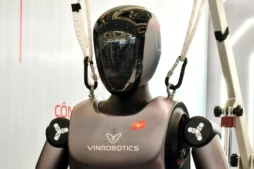Raspberry Pi KVM Powers On 16 Mac Minis with 8 Servos
When it comes to creative solutions, no one’s better up to the task than maker and developer Ivan Kuleshov. Whether he’s hacking a Mac Mini to use PoE or developing the new soon-to-be-released Compute Blade module, Kuleshov’s creative juice is in no short supply. Today we’re sharing another project of his shared to Twitter/X, this time a medley of both Raspberry Pi and Mac Minis. Kuleshov ran into an issue recently in which a rack of 16 Mac Minis needed to be manually powered on. His solution? Use a Pi to flip the physical switches, of course!
The Pi is connected to 8 individual servo motors that are responsible for activating the power switch on two Mac Minis a piece. The Raspberry Pi is fitted with a PiKVM HAT so it does more than just power on the Mac Minis. This also meant that developing a custom case was necessary to support the additional hardware.
This project is more than just a proof of concept. We spoke with Kuleshov who confirmed the setup has successfully been implemented in a professional setting. His team works in a data center that has three shelves of Mac Minis and this Raspberry Pi rig is able to power them on using the system of servos.
The Raspberry Pi has a couple of HATs and extra hardware that required Kuleshov’s cool case design. It fits the Raspberry Pi, a PiKVM HAT, a Servo HAT and an OLED screen. A heatsink and fan were included to cool the unit, as well. The outer housing is also fitted with LEGO-compatible studs so you can attach your favorite LEGO pieces—his team chose a Stormtrooper figure.
The software involves a custom UI that Kuleshov put together that makes it easier to operate the PiKVM features and servos. Python was used to program the servos while some bash scripts enable it to interact with a separate KVM switch.
To get a closer look at this Raspberry Pi project, check out the original post shared by Ivan Kuleshov. You can also follow him at Twitter/X or Instagram to keep an eye out for future creations as well as any updates on this one.















